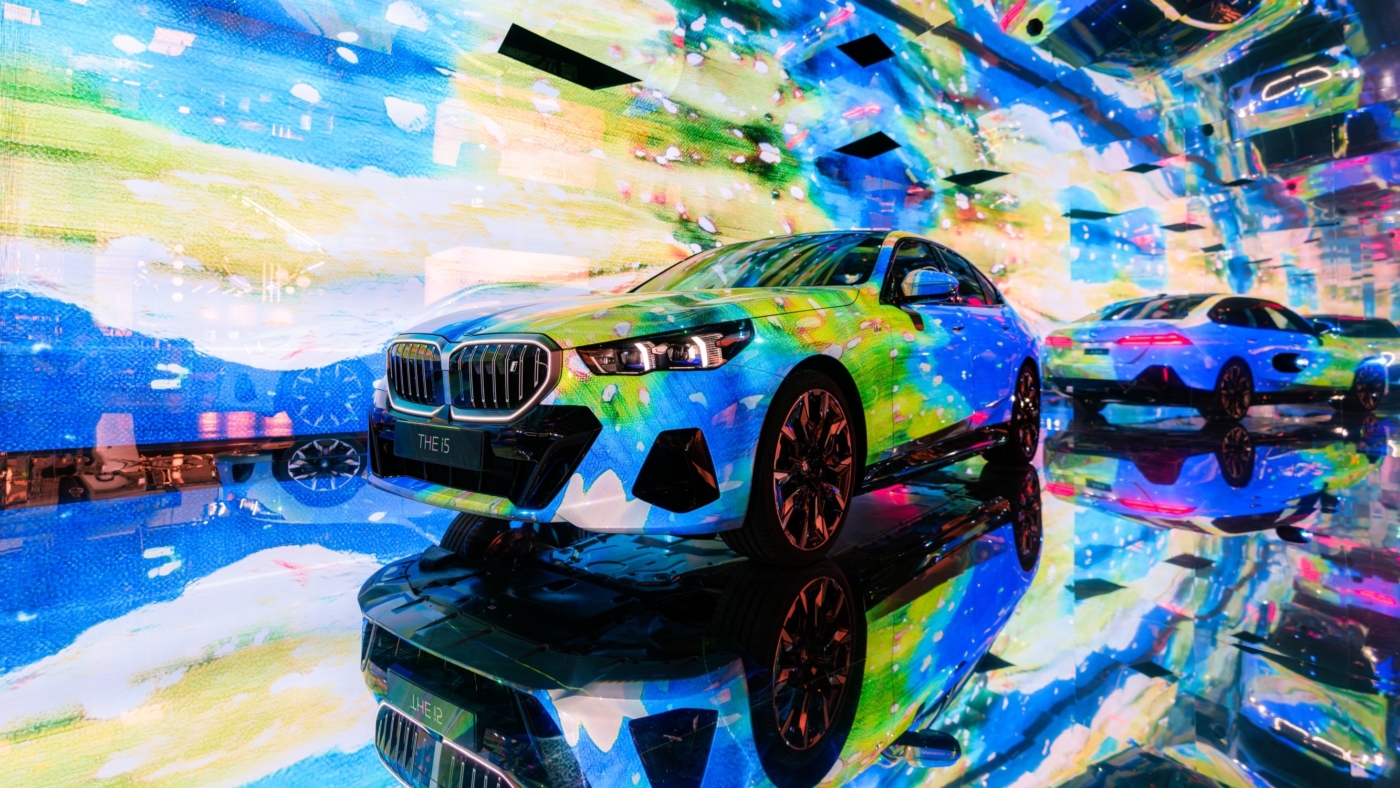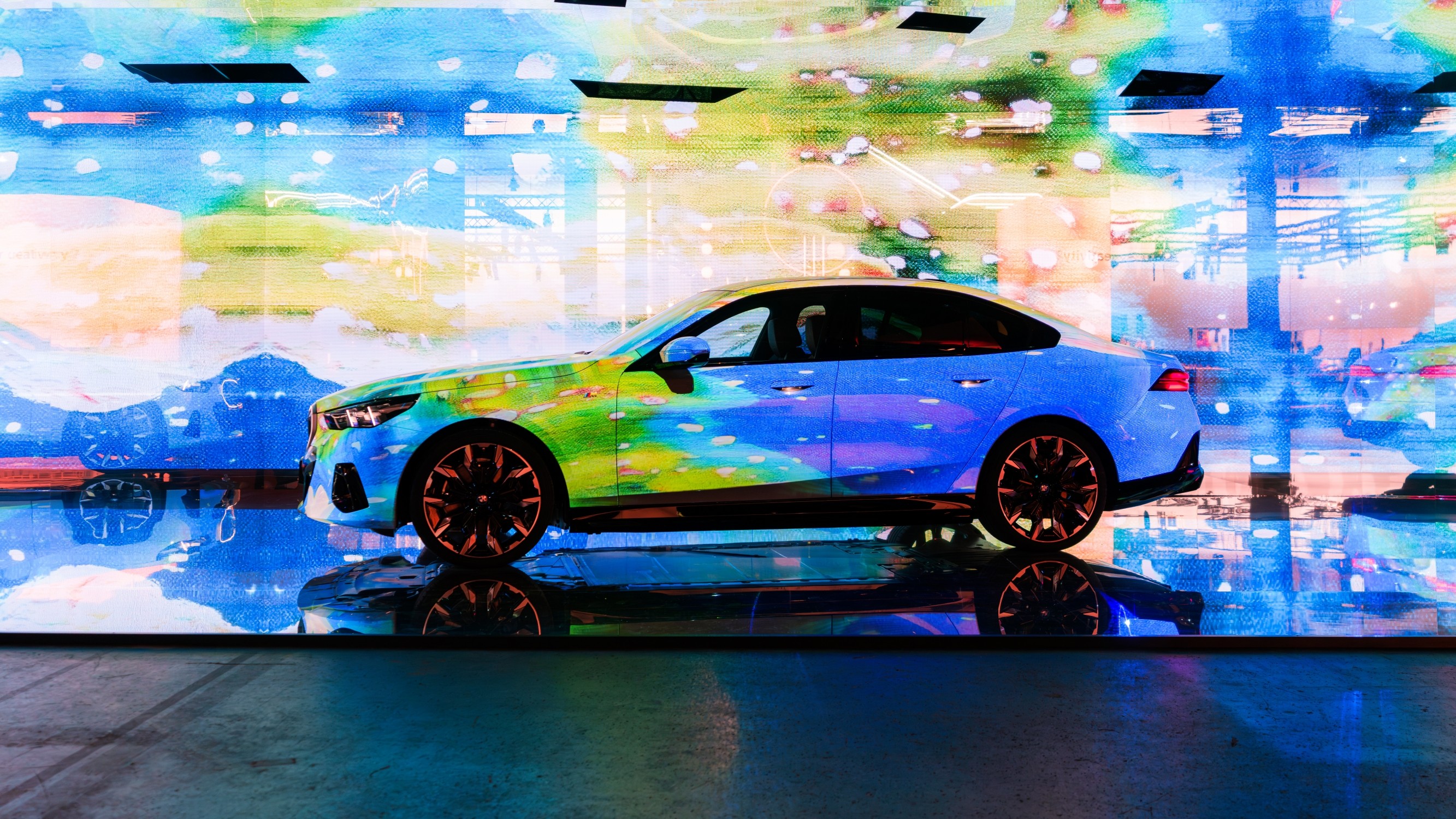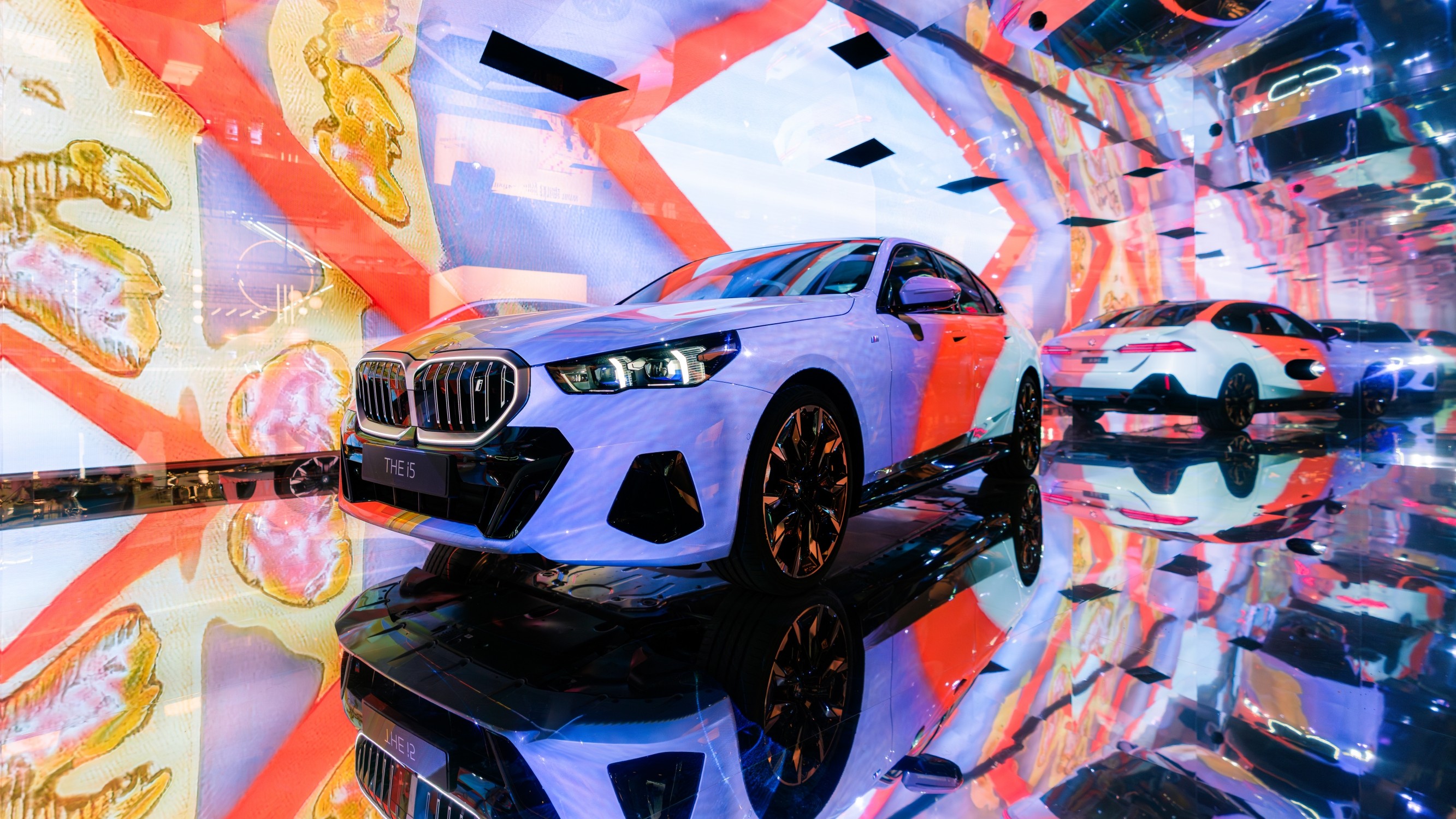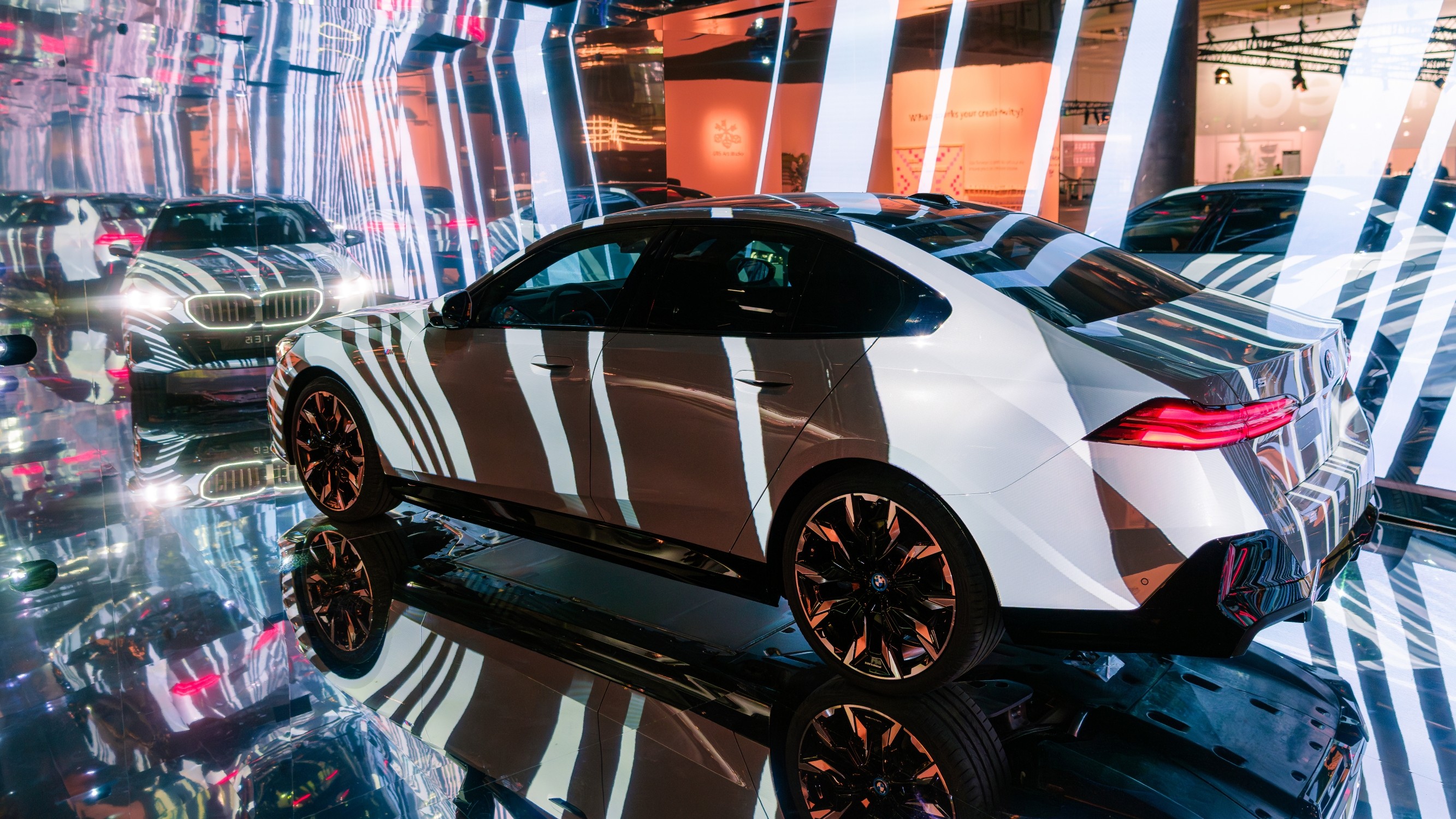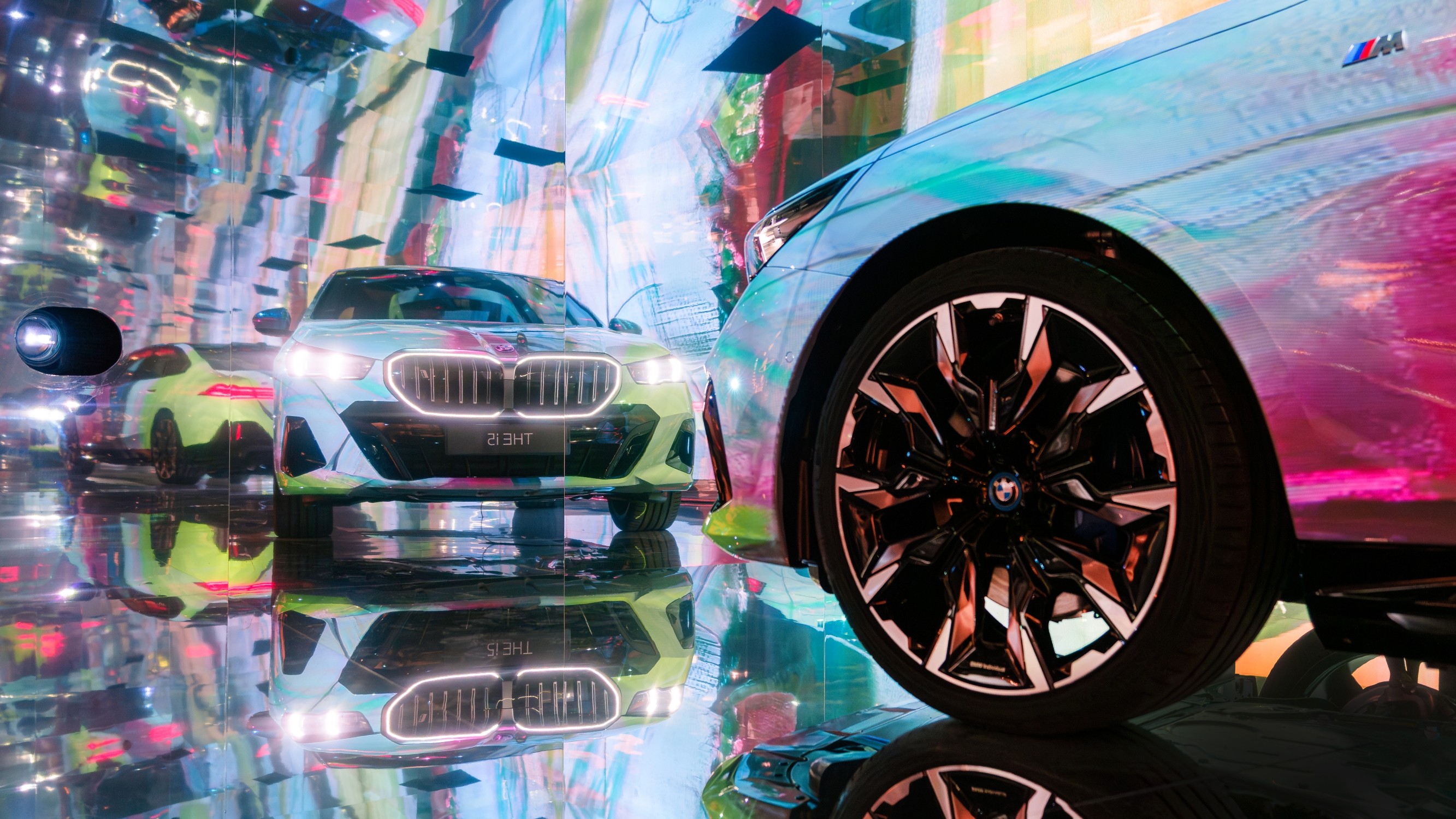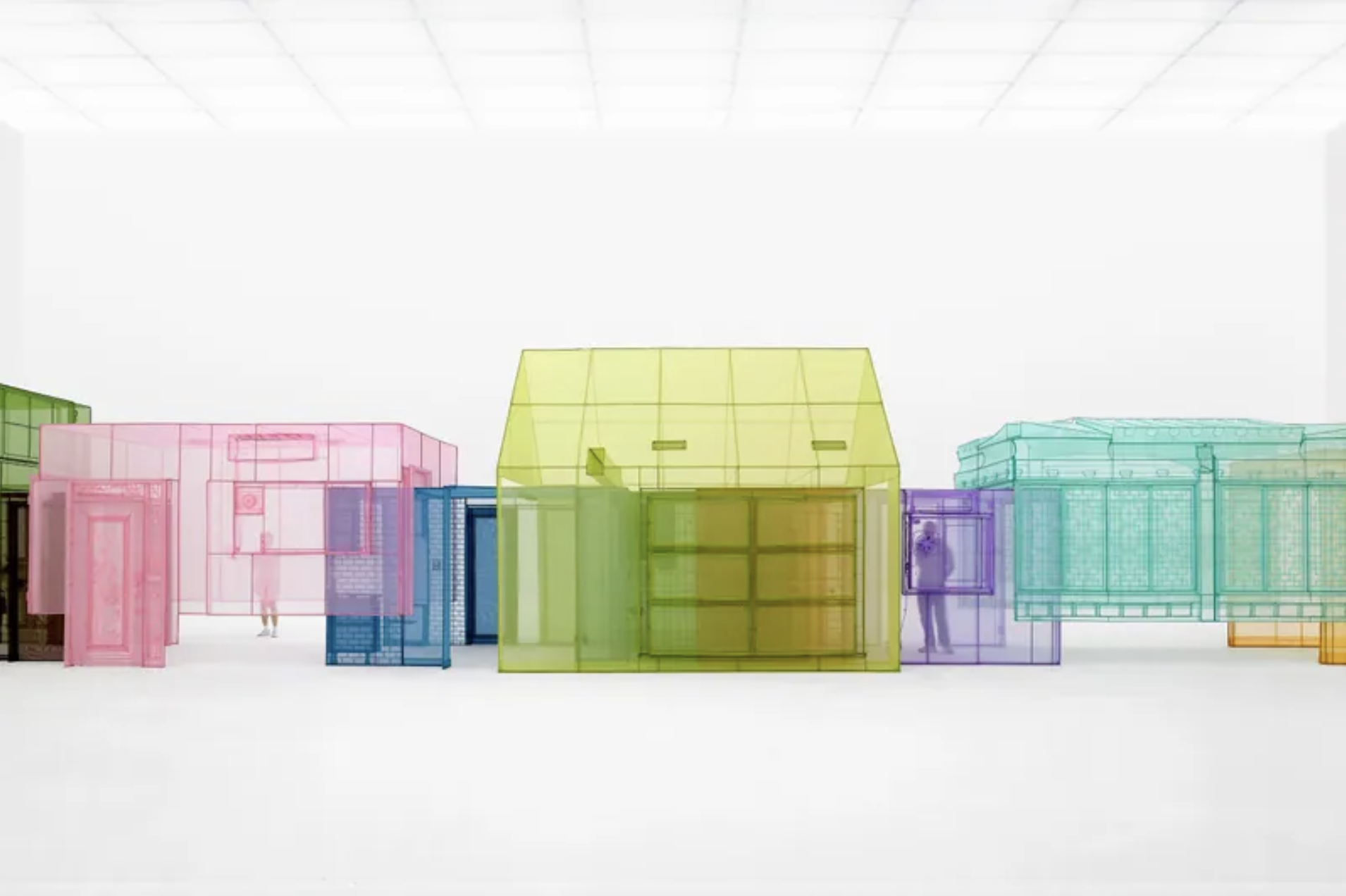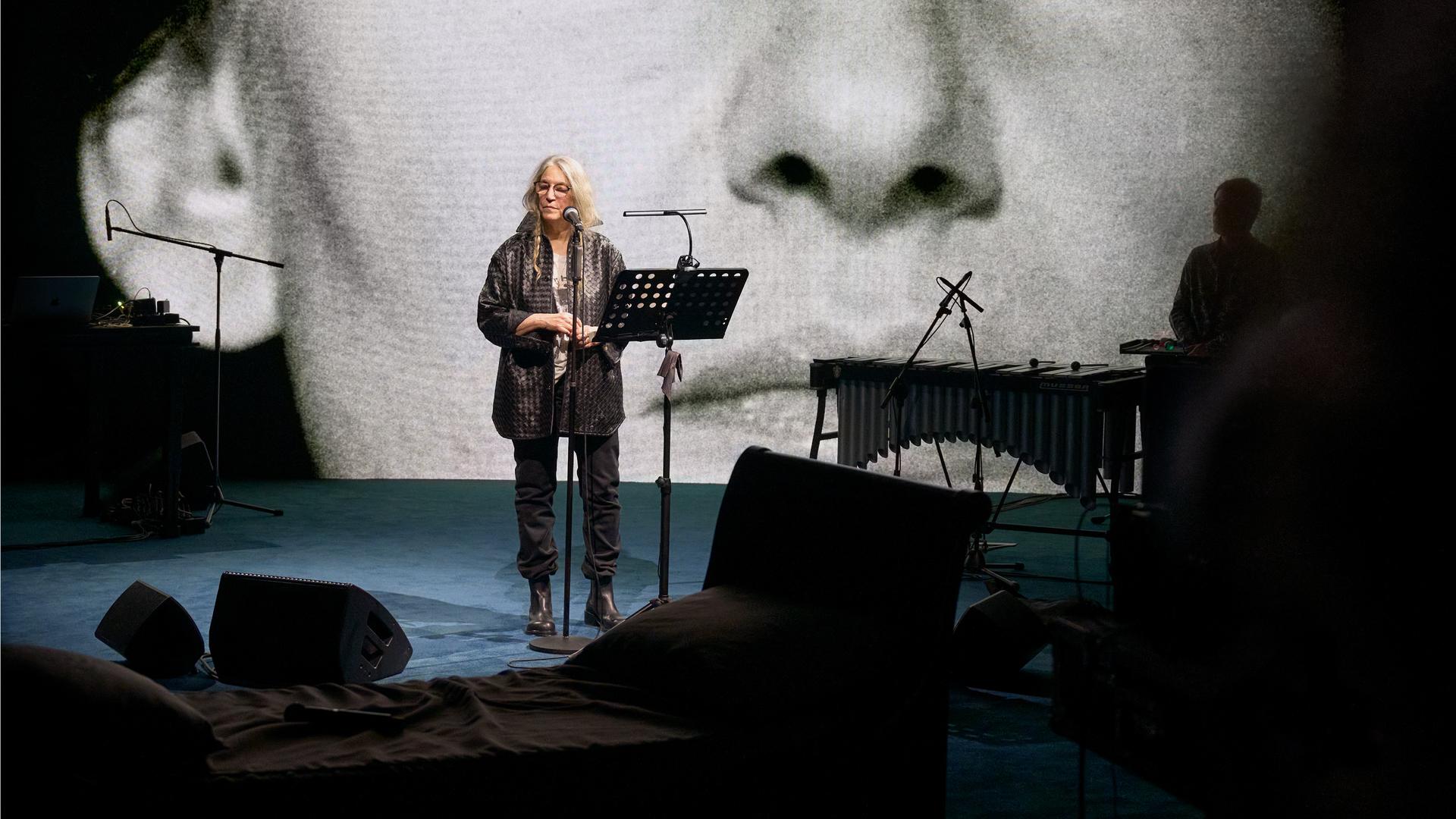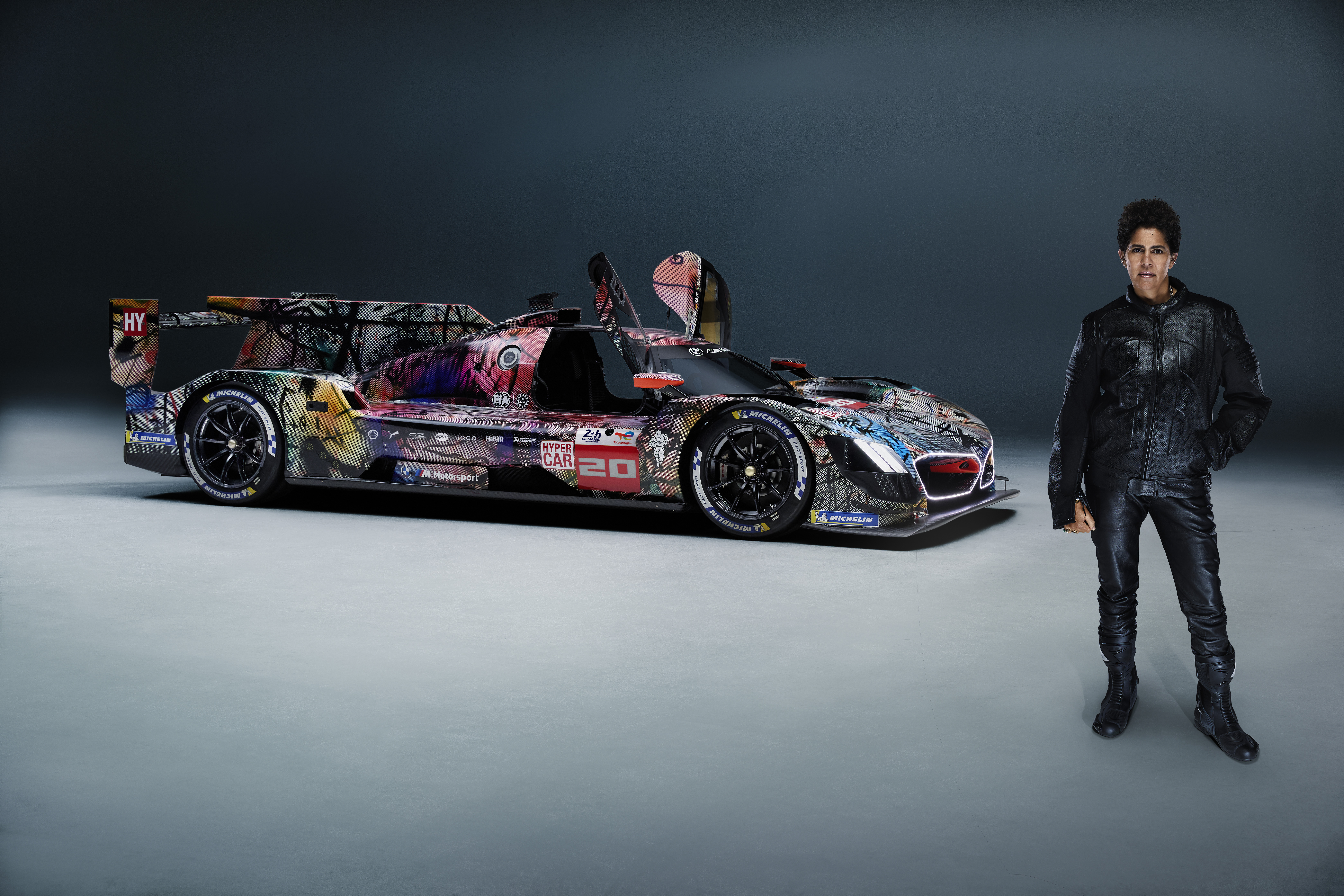BMW unveiled “The Electric AI Canvas” at Art Basel in Basel 2023, an installation inspired by the new BMW i5. A unique combination of art and technology that uses AI in a responsible manner to create an immersive on-site art experience.
The installation features works by contemporary artists Esther Mahlangu, Kohei Nawa, Eric N. Mack, Koo Jiyoon, and Bin Woo Hyuk.
To delve deeper into the relationship between art and technology, we had the opportunity to interview Gary Yeh, curator and collaborator on “The Electric AI Canvas,” and Nathan Shipley (Goodby, Silverstein & Partners) the technical expert involved in the project.
In what ways does the installation explore the relationship between art and technology?
Gary: The installation builds on trends of projection mapping exhibitions that create fully immersive art experiences. The Electric AI Canvas takes it further through exploring AI as a new tool in the creative process while collaborating closely with living artists to quite literally bring their styles to life. Technology pushes art forward just as creative ideas can lead to new applications of technology.
Nathan: This project examines the use of our most cutting-edge technology as a tool to create generative imagery. Specifically, by working in collaboration with artists and building our own training dataset, we present an example of the ways that AI can be used ethically in art-making. Artists have always integrated new tools into their work, and with The Electric AI Canvas, BMW is continuing its part in that conversation and tradition. That tradition at BMW goes back to the first art car made with Alexander Calder in 1975 and now continues to evolve here.
What challenges did you encounter while developing the installation?
Gary: The current AI environment has instilled uncertainty in many artists around how creative fields may be impacted. When we initially reached out to artists, some expressed similar hesitations of how AI could take from their work. However, upon working more closely and sharing the AI process with artists, the installation proved to be a positive experience and intellectual exercise for seeing how AI could supplement creativity rather than replace it.
Can you discuss any specific technical aspects or innovations used in the creation of the artwork?
Nathan: We’re using StyleGAN (our AI architecture of choice) to create work that is informed by these artists styles but is not simply copying their work. The datasets for each artist we’re working with are very small: only a handful of images, whereas StyleGAN was made to be trained with tens of thousands of aligned input images. One challenge of using datasets so small is that the model can simply learn to directly copy its input, which is not what we want to do nor is it interesting. Alternately, if the parameters aren’t properly tuned, the model can collapse and generate all of the same kind of output, which is not helpful for animation. This all required careful parameter tuning and exploration for each artist. Especially for Esther Mahlangu’s work, which is more geometric.
How did you ensure that AI was used responsibly in the creation of the artwork and how did you balance artistic expression with the technological aspects of the project? Nathan: The most important thing we’ve done to ensure that AI was used responsibly was to build our own datasets that we completely controlled. One of the biggest (and valid) complaints artists have is about their work being used to train AI models without permission. We avoid that issue entirely by working directly and in cooperation with these contemporary artists.
Can you describe the immersive experience that viewers can expect from the installation and how does the “Electric AI Canvas” engage with the audience on-site at Art Basel?
Gary: The installation creates a unique experience for viewers to fully immerse themselves in the artwork. Bold colors and energetic compositions all wrap the viewer in ways that can enhance the often emotional experience of seeing art. Instead of what would otherwise be paintings fixed to walls, the installation transforms in front of viewers’ eyes, constantly engaging as it evolves from one configuration to the next, one artist to another.
How do you see AI influencing the future of art? Gary: AI has the ability to expand creative capabilities. Not only will AI be used as a tool to create new work, but AI itself will also be subject matter that artists respond to in their work, just as artists have responded to changing political or social times over the centuries.
How did the collaboration between artists and BMW come about for this project?
BMW Group Cultural Engagement: For the “Electric AI Canvas”, BMW worked closely with Gary Yeh (ArtDrunk) to curate a list of five outstanding contemporary artists invited to participate in the project. Esther Mahlangu is particularly noteworthy among the five artists. 1991 she was the first woman to create a BMW Art Car. Since then, she has worked on different collaborations with BMW, e.g., the BMW Individual 7 Series by Esther Mahlangu – in 2016, she transformed a luxury sedan into a work of art by painting her characteristic motifs on the real wood interior trims. And this year, she created the anniversary logo to mark 50 years of BMW Group South Africa. We look forward to a continued inspiring dialogue with all the artists involved.
How does the installation reflect the essence or features of the new BMW i5?
BMW Group Cultural Engagement: The use of advanced artificial intelligence and contemporary artworks in the “Electric AI Canvas” installation reflects BMW’s commitment to innovation, cutting-edge technology and design, which are key features of the new BMW i5. The new BMW 5 Series is digital, dynamic and now, with the BMW i5, also fully electric. Within our collaborations, the BMW Group guarantees absolute creative freedom – as this is just as essential for groundbreaking artistic work as it is for major innovations in a successful business – such as the new BMW i5.
Thanks to the team of BMW for having us.
This interview is part of an up-coming series around AI and Culture.

